Learn
Forensic Dentistry
Forensic odontology is the application of dentistry to the law when teeth or bite marks are related to a crime. Teeth marks or the teeth themselves may provide valuable evidence at the scene of a crime.
Skeletal Remains
Teeth are very durable and difficult to destroy. In fact, tooth enamel is harder than any other substance in the human body. Even after much of a skeleton has decayed, the teeth may remain intact.
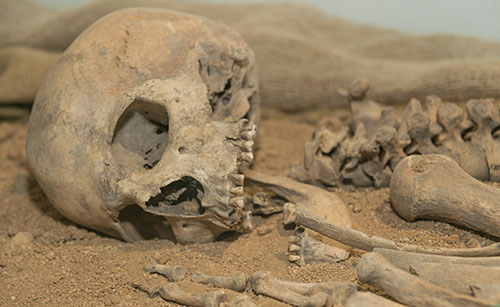
The number and type of teeth present can give investigators an idea of the age of the victim.
- Most adults have 32 teeth.
- Most primary teeth (or baby teeth) are lost by 12-13 years of age.
- All adult teeth are typically present by age 13, but wisdom teeth do not appear until the mid-teens to early twenties.
The diagram below shows the age range at which primary teeth are shed and permanent teeth appear.
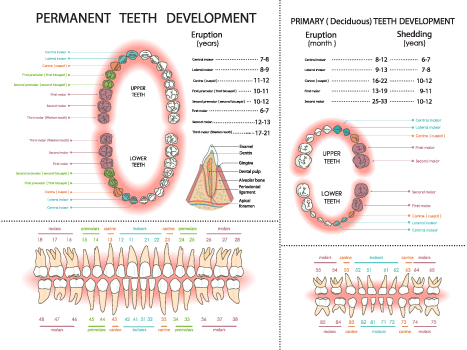
Knowledge Check #1
If human remains are found that contain all adult teeth except for the second and third molar, the victim is likely _______blank.
- 6 years old
- 8 years old
- 11 years old
- 20 years old
Answer: c. 11 years old
Investigators can compare the teeth of a victim to dental records of a missing person. The best comparisons come from X-rays, but if those are not available, notations on a patient's dental chart can help the forensic odontologists tell if the teeth are the same.
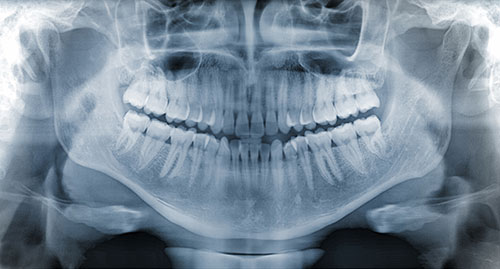
DNA samples may also be extracted from the pulp of the teeth. While the pulp, unlike the teeth, can be damaged by fire and other conditions, it can remain for hundreds of years.
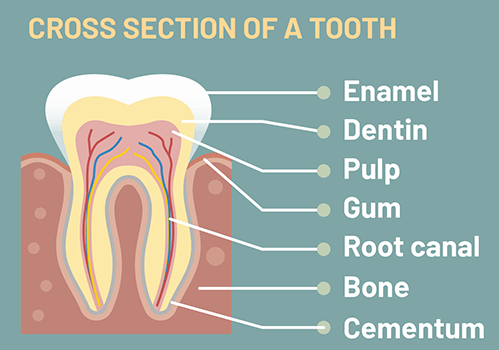
Historical Ancedote
Did you know Paul Revere, famous for his midnight ride to warn the colonists of British invasion, was a silversmith and a dentist? He also may have acted as America's first (unofficial) forensic dentist during the Revolutionary War.
Dr. Joseph Warren was killed in the Battle of Bunker Hill in 1775 and buried in a shallow grave by the British without any identifying markers or uniform. Ten months later, the body was exhumed. Paul Revere identified the body based on the dental bridge of gold wire and ivory teeth he had created for Dr. Warren prior to his death.
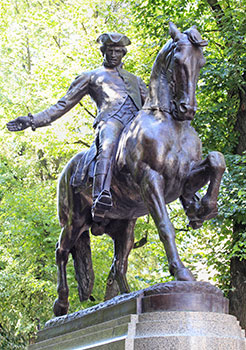
Bite Mark Evidence
Bite marks can be left on food, gum, pencils, or a victim's skin. If there is a bite mark left on skin, it will leave a bruised mark, which can help experts determine when the bite mark was created.
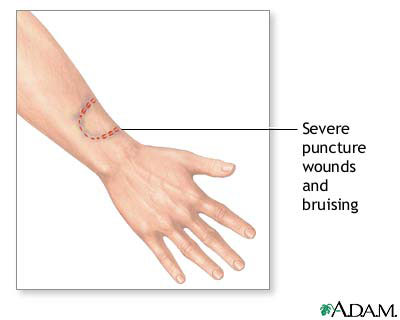
Optional: You can see example images of human bites at the following resources.
- How To Tell if a Human Bite Wound is Infected?, Bite Pro Clothing
- Forensic Odontology, Part 4: Human Bite Marks, British Dental Journal
Prior to collecting bite mark evidence, investigators will swab the area to collect DNA from the saliva of the biter.
Then, bite marks are photographed with a scale and a measurements are taken and recorded.
If the victim is deceased, the bite mark may be removed and preserved in a chemical compound called formalin.
Some features of bite marks that experts analyze are:
- number of tooth marks
- placement of teeth
- any missing teeth
- shape of the bite
- width and depth of the bite
- horizontal and vertical diameters
- color of the bite mark
- distances between each tooth
Based on the bite mark, a forensic dentist can tell a lot about the teeth of the biter for example:
- A gap in the bite indicates a missing tooth.
- Crooked impressions indicate crooked teeth.
- Jagged-looking impressions indicated chipped teeth.
However, bite marks from a single person can look quite different depending on the location of the bite, how much pressure the biter applied, and the movement of the biter or victim.
Bite marks are not like fingerprints or DNA. They may be used to identify characteristics of a person's teeth but cannot determine for certain who the biter was.
Notorious Case
Ted Bundy's case was one of the most famous involving bite mark evidence. While some uphold his case as validation for the use of bite mark evidence, others claim that investigators just got lucky as Ted Bundy had "incredibly crooked teeth."
Dental molds, taken from Ted Bundy following a warrant, were compared to a bruise caused by a bite on one of his victims. Check out the CBS News article "Ted Bundy: The serial killer's final years" which shows the dental molds taken of Bundy's teeth and the bruised bite mark on the victim.
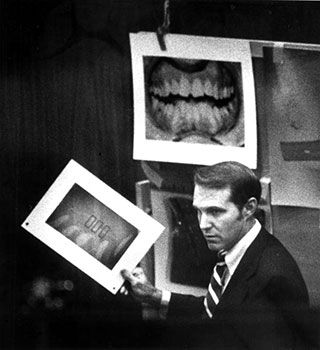
Legitimacy Concerns
The National Academy of Sciences (NAS) published a report in 2009 titled "Strengthening Forensic Science in the United States: A Path Forward" which analyzed many areas of forensics to identify weaknesses and suggest improvements. In terms of forensic odontology, the report stated that:
- Human dental patterns have not been scientifically proven to be unique.
- The ability of a human's dental pattern to transfer a unique pattern to human skin has not been scientifically established.
- The ability to analyze bite mark patterns to interpret how much they have been distorted by various factors (such as skin elasticity and swelling) has not be demonstrated.
The report states, "In numerous instances, experts diverge widely in their evaluations of the same bite mark evidence, which has led to questioning of the value and scientific objectivity of such evidence."
The report suggests that bite mark evidence may have some value in excluding possible suspects, but more research is needed to determine if it is valuable for identifying suspects.
Knowledge Check #2
Would the National Academy of Science classify bite mark evidence as individual or class evidence?
- Individual
- Class
Answer: b. Class. The report states that the uniqueness of individual bite patterns as analyzed on human skin has not been supported scientifically.
The Innocence Project
The Innocence Project seeks to "exonerate, or legally clear someone of blame after due consideration of the case, the innocent through DNA testing and reform the criminal justice system to prevent future injustice." They have identified at least twenty-six people who have been wrongfully convicted based on bite mark evidence. Innocence Project lawyers used DNA evidence to overturn many of these cases; they were successful in getting some of these men released from prison, but only after each had served over ten years (or many more!) for crimes they did not commit.
The Innocence Project has called for an end to the use of bite mark evidence, and many experts agree. Several forensic dentists have come forward and rejected the discipline as unreliable. In 2016, the Texas Forensic Science Commission called for an end to the use of bite mark evidence in criminal cases.
Credits
"About". Innocence Project, https://innocenceproject.org/about/.
National Research Council. Strengthening Forensic Science in the United States: A Path Forward. The National Academies Press, 2009, www.nap.edu/catalog/12589/strengthening-forensic-science-in-the-united-states-a-path-forward.